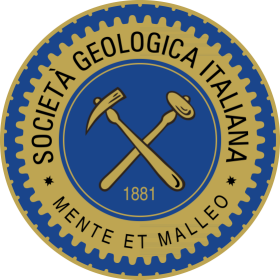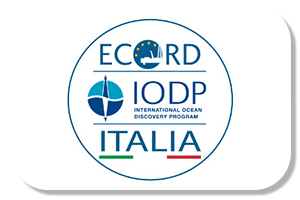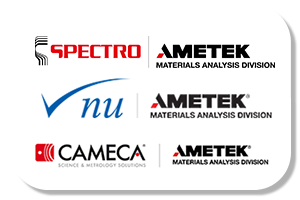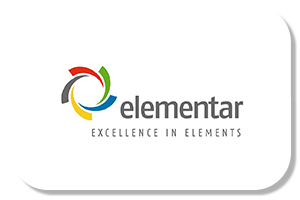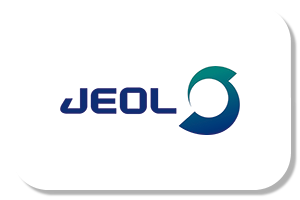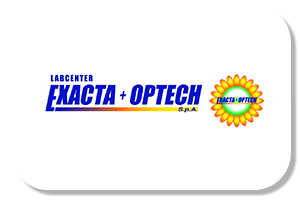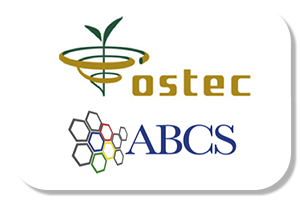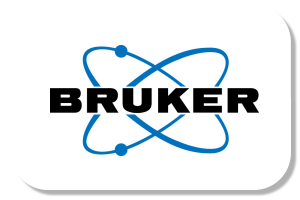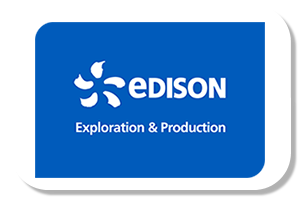P1. Integrated mineralogy, petrology and computational modelling to decipher geochemical interactions and tectonic histories recorded by metamorphic rocks from the deep Earth
P2. Mineralogical Crystallography and New Minerals
P3. Georesources, geomaterials and their synthetic conterparts: occurrence, properties, utilizations/industrial applications
P4. Minerals, environment and medical uses
P5. Geosciences in Archaeometry and Cultural Heritage Conservation
P6. Experimental and theoretical studies of magmatic processes
P7. New frontiers in metamorphism and deformation-metamorphism relationships through cutting-edge analytical, experimental, numerical, and theoretical techniques
P8. Permo-Triassic geodynamic evolution of the Western Tethys realm: insights from magmatism, tectonics and stratigraphic data
P9. Isotopic tracers and timing of dynamic evolution of subduction zone settings
P10. Metasomatic and refertilization processes in lithospheric mantle: unraveling the heterogeneities in mantle sources and related geodynamic systems
P11. Mantle Petrology: from observation to calculus
P12. Advances in Understanding Geological and Petrological Processes in the Oceanic Lithosphere
P13. A multidisciplinary approach to unravel the evolution of basement geology
P14. Bio-Geo materials for environmental remediation: novel approaches, technologies and case studies
P15. Geobiology: Biosphere-Earth interactions
P16. Effects of climate change on biogeochemical cycles and life evolution from the deep time to the Anthropocene
P17. Planetary Climates from deep time and deep space
P18. Planetary evolution: new insights from remote sensing, in-situ, terrestrial analogues and meteorite studies
P19. Unveiling the Antarctica: geological, geophysical and sedimentological approaches to the evolution of Antarctica (In memory of Pietro Armienti)
P20. Mechanical, chemical and hydraulic interactions in seismogenic fault zones
P21. Forensic Geology and Environmental Crimes in the Italian Legal System
P22. The interplay between magmatic systems and tectonics: insights from multidisciplinary approaches
P23. Orogenesis and orogenic wedges: a multiscale and multitechinique approach
P24. The Po Plain and the Adriatic Sea: geological evolution of a complex thrust belt - foredeep system
P25. Active tectonics and seismotectonics between the Northern Apennines and the Southern Alps
P26. Quantifying Burial and Exhumation processes during continental lithosfere deformation: inferences from nature and models
P27. From seismic source to fault using multidisciplinary approaches: the central and southern Apennines as natural laboratory
P28. Analogue and numerical modelling of geological processes: linking observation, interpretation and prediction
P29. Unsaturated zone preferential flow in porous and fractured media
P30. Managed Aquifer Recharge (MAR): experiments and prenormative activity
P31. Geosciences for disaster risk reduction: problems, solutions and perspective
P32. Early warning systems for geo-hydrological risk reduction. Integration of multi-source data, uncertainty and reliability of the assessments
P33. Geology and hydrology in karst environments: innovations on modelling water flow and survey and exploration techniques
P34. Approaches for evaluation and protection of groundwater resources
P35. Geologic and geothematic mapping in a dynamic country: maps, database and data dissemination
P36. Geomorphological Hazards and Cartography
P37. Landslides and landscapes: Identification, monitoring and risk management
P38. Urban Geomorphology, Urban Landscape Evolution and Risk Scenarios
P39. Recent advances in fluid geochemistry in active volcanic and geothermal areas: following Mariano Valenza
P40. The C, S and halogens (F-Cl-Br-I) tale: unravelling fluids and redox processes from the subducting slab to volcanic emissions
P41. CO2 degassing from tectonically active areas: a crucial parameter for the geological carbon cycle
P42. Legacy and new applications of stable-isotope geochemistry
P43. Geochemistry of mercury: from noble metal to global pollutant
P44. Volcanic lakes: multi-methodological and multi-disciplinary approaches for the characterization of the geosphere-biosphere interactions
P45. New developments and challenges in experimental volcanology
P46. Physical Volcanology of Explosive and Effusive Eruption: Insights from multidisciplinary studies
P47. Processes acting into volcano plumbing systems and their relationships with eruptive dynamics
P48. Geosciences at school 2019
P49. Open poster session
P1. Integrated mineralogy, petrology and computational modelling to decipher geochemical interactions and tectonic histories recorded by metamorphic rocks from the deep Earth
Conveners: Mattia L. Mazzucchelli (UNPV), Mattia Gilio (UNIPV), Marco Scambelluri (UNIGE), Donato Belmonte (UNIGE)
Corresponding e-mail: Questo indirizzo email è protetto dagli spambots. È necessario abilitare JavaScript per vederlo.
In recent years, multidisciplinary approaches across scales greatly improved our understanding of tectonic and chemical processes affecting metamorphic rocks, minerals and fluids in the deep Earth. Minerals and mineral assemblages retain information on their growth and stability as a function of pressure, temperature, fluid composition, solubility and redox conditions in a variety of space and timescales. The recent advances in methodological and technical approaches significantly improved our capability of extracting such information via detailed microstructural, mineralogical, petrologic and geochemical studies. However, the correct interpretation of these records and their integration at all scales requires synergies between field work, observation of natural samples, experiments and computational modeling. This session aims to collect contributions addressed to present and discuss new and revised methodologies for the measurement, analysis, interpretation and modelling of physical and chemical processes affecting the rock and minerals behavior in key Earth’s geodynamic environments.
P2. Mineralogical Crystallography and New Minerals
Conveners: Fernando Camara (UNIMI), Cristina Carbone (UNIGE)
Corresponding e-mail: Questo indirizzo email è protetto dagli spambots. È necessario abilitare JavaScript per vederlo.
Crystallographic research is an important part of mineralogy. At the same time, the ever-growing mineral diversity in the Earth and the Solar System is testified by the large number of new mineral species (some 5.500), many of them described from Italian localities. Mineralogical crystallography is definitely a consequence of the evolution of the mineral kingdom. Yet, the crystallographic studies coupled with the composition of minerals are not only used to decipher the Earth's history but also have many applications in material sciences and technology. The session is devoted to the discussion of topics related to the crystal structure, composition of minerals and related inorganic phases as well as the description of new mineral species.
P3. Georesources, geomaterials and their synthetic conterparts: occurrence, properties, utilizations/industrial applications
Conveners: Stefano Columbu (UNICA), Laura Gaggero (UNIGE), Nicola Mondillo (UNINA), Rossella Arletti (UNITO), Annalisa Martucci (UNIFE)
Corresponding e-mail: Questo indirizzo email è protetto dagli spambots. È necessario abilitare JavaScript per vederlo. Questo indirizzo email è protetto dagli spambots. È necessario abilitare JavaScript per vederlo.
Georesources and geomaterials (rocks, minerals and their synthetic counterparts) are essential for human existence, technological progress and industrial applications, being present in our daily life and used everywhere in the surrounding environment: from the artefacts and monuments, to the biggest infrastructures down to the smallest electronic devices. In most recent years, a global concern has grown over the long-term availability, and the secure supply of certain metals and raw materials employed in high-tech applications. In the global economic context, in a view to full respect for the environment, the EU strategies are addressed to the sustainable exploitation and use of raw materials, soil decontamination, circular economy, low-carbon energy technologies, low-energy solutions for drinking water. In this perspective, the Earth scientist' community can play a fundamental role in the sustainable exploitation of primary georesources and in the synthesis of nature-inspired tailor-made materials. This session is open to contributions on occurrences, properties and uses of geomaterials (i.e., minerals, rocks) and their synthetic counterparts relevant for industrial, environmental applications and for cultural heritage conservation, with particular attention to the building materials, ceramics, micro- and nanoporous compounds, geopolymers, nano-, glassy- and fibrous-materials, traditional and unconventional industrial metals and their ore deposits.
P4. Minerals, environment and medical uses
Conveners: Claudia Belviso (CNR-IMAA), Giovanni Grieco (UNIMI), Pietro Marescotti (UNIGE)
Corresponding e-mail: Questo indirizzo email è protetto dagli spambots. È necessario abilitare JavaScript per vederlo.
Environmental and medical mineralogy investigate the relationship between minerals, ecosystems and human health, thus covering a broad interdisciplinary field ranging from mineralogy to geochemistry including geology, biology and medicine. This session will gather recent research activities dealing with minerals of environmental concern, also including those of the human body. It will include environmental risk assessment, comprising release, diffusion and targeting as well as remediation, reclamation and rehabilitation studies. It will also provide a forum to promote a discussion on the role minerals play to solve environmental problems (e.g. toxic organic and inorganic elements immobilization) and on their effects upon human health.
P5. Geosciences in Archaeometry and Cultural Heritage Conservation
Conveners: Marco Benvenuti (UNIFI), Anna Maria De Francesco (UNICAL), Claudio Mazzoli (UNIPD)
Corresponding e-mail: Questo indirizzo email è protetto dagli spambots. È necessario abilitare JavaScript per vederlo.
The application of Conservation Science to the safeguard of Cultural Heritage for future generations represents a major issue for our Society. The role that can be played by Geosciences as a whole in these highly-demanding challenge appears of utmost relevance. Possessing good knowledge of materials, both natural and artificial, and of their complexity, as well as of the relationships between human and natural processes, geoscientists are increasingly involved in multidisciplinary studies of this crucial research field and provide an invaluable contribution. Indeed, traditional approaches and pioneering sophisticated experimental and analytical developments in the different branches of Earth Sciences turn out to be powerful tools in the reconstruction of production technology and provenance of various types of archaeological artefacts, the diagnosis of their conservation state, and the definition of appropriate planning and preservation strategies. Thus, the aim of this session is to stimulate discussion among geoscientists and scholars with different scientific backgrounds involved in cultural heritage studies. All these researchers are invited to present their results covering different aspects of both archaeological and conservation issues.
P6. Experimental and theoretical studies of magmatic processes
Conveners: Michael R. Carroll (UNICamerino), Fabio Arzilli (UNIManchester, UK), Paola Stabile (UNICamerino)
Corresponding e-mail: Questo indirizzo email è protetto dagli spambots. È necessario abilitare JavaScript per vederlo.
The combination of experiments and models is fundamental to understand complex magmatic and volcanic processes. Particularly, experiments and models can provide valuable insights and constraints on processes involved in the formation, evolution, and transport of magmas within the Earth. Experiments useful for such investigations include: (i) phase equilibrium studies (ii) measurements of volatile solubility, (iii) determination of crystal-melt-fluid partitioning of volatile and non-volatile elements, (iv) kinetic studies involving crystal growth and nucleation rates, vesiculation kinetics, element diffusion rates and mineral-melt reaction rates, and (v) rheological studies. Furthermore, in situ 4D experiments are the new frontier regarding experimental approaches, which allow us to study magma kinetics and rheology in real time. The in situ 4D experiments are fundamental to define equilibrium and disequilibrium conditions of magmatic and volcanic processes. In addition, the results of experimental studies provide fundamental information needed for a better understanding and development of quantitative models of magmatic dynamics and processes. At the same time, thermodynamic and numerical models allow us to take into account all the variables experimentally investigated, which control magma kinetics and rheology, in order to provide physical constraints on conditions of magma genesis (mantle or crust), conditions of differentiation and crustal storage (volcanic systems), and processes and timescales of magma transport and volcanic processes. For this session we invite contributions involving experimental and theoretical/modelling studies of magmatic systems, and related applications to magma genesis, differentiation and migration, including near-surface volcanic processes.
P7. New frontiers in metamorphism and deformation-metamorphism relationships through cutting-edge analytical, experimental, numerical, and theoretical techniques
Conveners: Nadia Malaspina (UNIMIB), Sabrina Nazzareni (UNIPG), Alberto Vitale Brovarone (UNITO), Stefano Zanchetta (UNIMIB)
Corresponding e-mail: Questo indirizzo email è protetto dagli spambots. È necessario abilitare JavaScript per vederlo.
Metamorphism is widespread in terrestrial (from the seafloor to subduction and collision) and extraterrestrial (parental bodies and meteorites) rocks and it is often synkinematic with deformation. The study of metamorphic processes has been evolving fast over the last decades and dissemination of emerging is strongly needed. This session aims at gathering cross-disciplinary studies providing new perspective on metamorphic and deformation processes by means of «unconventional» analytical (e.g. high-resolution in-situ quantifications, new synchrotron-based 3D measurements, nanoscale facilities), experimental, numerical and theoretical techniques. We welcome contributions from petrologists, mineralogists, structural geologists, geochemists and physicists and any other scientific domain connected to metamorphic processes in all their diversity on Earth and beyond.
P8. Permo-Triassic geodynamic evolution of the Western Tethys realm: insights from magmatism, tectonics and stratigraphic data
Conveners: Marcello Caggiati (UNIFE), Federico Casetta (UNIFE), Corrado Morelli (Provincia Autonoma di Bolzano - Servizio Geologico)
Corresponding e-mail: Questo indirizzo email è protetto dagli spambots. È necessario abilitare JavaScript per vederlo.
Different magmatic episodes recorded in the European and Adria plates took place after the Variscan orogenic cycle, between Permian and Triassic. Notwithstanding the large number of geodynamic models proposed since the XIX century, a hot debate arises when the petrographic/geochemical data are faced with field geology, stratigraphy, tectonics and basin analysis evidences. The discussion is also fostered by geochronological data, which are partly redrawing the tectono-magmatic evolution of these regions. This session is aimed at taking stock and discussing the Permo-Triassic geodynamic framework of the Western Tethys area, embracing all the geochemical, petrological, geochronological, tectono-magmatic as well as stratigraphic contributions that can provide new insights on this topic.
P9. Isotopic tracers and timing of dynamic evolution of subduction zone settings
Conveners: Enrico Cannaò (UNIMI), Martina Casalini (UNIFI), Federico Farina (UNIMI)
Corresponding e-mail: Questo indirizzo email è protetto dagli spambots. È necessario abilitare JavaScript per vederlo.
The understanding of the geochemical interaction between Earth’s major reservoirs is a key topic to unravel the evolution of our planet. Among the geodynamic settings, subduction zones represent the site where intense fluid/melt-mediated mass transfer occurs with major implications for the refertilization of mantle domains and the onset of arc magmatism. The application of radiogenic and stable isotopes (both traditional and non-traditional) to subduction-related products represents a fundamental tool to investigate the processes occurring at subduction zones. In fact, isotopic signatures i) can be used as highly sensitive tracers of subduction component involvement (i.e., revealing the nature of subducted components but also providing useful estimations of recycled volumes) and ii) are able to constrain the time-scale of processes occurring within the mantle concerning the formation of magmas at depth and their storage within upper crust and allowing the reconstruction of the P-T-time-fluid path in subduction. In this light, subduction zones represent the perfect natural laboratory to understand the process of crustal recycling, magma formation but also timing and duration of subduction-related processes. This session aims to integrate geochemical and isotopic studies on subduction-related materials to explore the major processes governing the geochemical refertilization of the mantle but also the time-scale of magma formation, storage and evolution as well as the reconstruction of P-T-time path.
P10. Metasomatic and refertilization processes in lithospheric mantle: unraveling the heterogeneities in mantle sources and related geodynamic systems
Conveners: Barbara Faccini (UNIFE), Tommaso Giovanardi (UNIMORE), Cristina Perinelli (UNIROMA)
Corresponding e-mail: Questo indirizzo email è protetto dagli spambots. È necessario abilitare JavaScript per vederlo.
The mantle is the major elemental reservoir, the most prominent source of melts and it drives the geodynamic processes on the Earth. Its composition is extremely heterogeneous, mainly due to melting and melts/fluids migration which constraints the elemental (major, trace and volatile elements) and isotopic (radiogenic and stable) transfer among different geochemical reservoirs. These processes are known as depletion, metasomatism or refertilization and lead to the formation of variably enriched mantle portions which may become sources of melts in the global element cycle. Some of them, such as C, are relevant throughout the Earth system and essential to life. Hence, deciphering mantle metasomatism is fundamental to understand the global cycle of many elements and to constrain the sources and the physical and chemical characteristics of several magmatic and geodynamic processes. The session is open to any contribution that aims to unravel the mantle depletion, metasomatic and refertilization processes through a multidisciplinary approach. This includes: a) petrological and geochemical studies of highly enriched magmas, metasomatised fossil mantle portions (comprising orogenic massifs and xenoliths) and their mineral components; b) tectonic and paleomagnetic studies to reconstruct the nature and timescale of the main geodynamic processes; c) experimental and geochronological studies to constrain the nature of the processes and their timing in relation to the geodynamic events.
P11. Mantle Petrology: from observation to calculus
Conveners: Enrico Bonatti (CNR-Ismar), Giulio Ottonello (UNIGE)
Corresponding e-mail: Questo indirizzo email è protetto dagli spambots. È necessario abilitare JavaScript per vederlo.
Stating that knowledge of Mantle Petrology is crucial in understanding the most important rock-forming processes is almost a tautology. Our knowledge is based on three main informational lines: observation – experiment – calculus. We assume that each of the three lines is at present developed at best. However, this assumption results erroneous in many aspects. When calculus is a simple mathematical way of reproducing some observations and experiments, it leads most often to circular paralogisms, difficult to identify and neutralize. When observation is made difficult by the fog of experimental preconceptions (based on simplified analogues) then one assigns the status of facts to simple interpretations. Finally, when experiments are made on simplified systems, then the extrapolation to the real compositional realm leads to erroneous deductions. As an example let us consider the CMAS system, taken as an analogue of upper-mantle and lithosphere. The CMAS (CaO-MgO-Al2O3-SiO2) (+- H2O e CO2) whose sub-ensemble “basalt tetrahedron” or the even more restricted FADS (Forsterite-Anorthite-Diopside-Silica) are indeed extremely complex from the topological point of view. In an an-hydrous and de-carbonated CMAS may nucleate and grow around fifty pure minerals and about fifteen solid mixtures. When alkalies and iron are introduced in the system then the topological complexity becomes humongous. Interpretation of the petrological paths may be attempted only assigning to first principles their leading role. Deductions must obey first principles, then experiments must be interpreted at the light of the correct thermodynamic assessment, and finally observations acquire their final imprinting role. In brief “looking at” is not synonymous of “seeing”. The purpose of this session is to drive the audience’s attention on the complex interplay of calculus – experiments and observations in some key applications.
P12. Advances in Understanding Geological and Petrological Processes in the Oceanic Lithosphere
Conveners: Giulio Borghini (UNIMI), Camilla Palmiotto (ISMAR Bologna), Alessio Sanfilippo (UNIPV)
Corresponding e-mail: Questo indirizzo email è protetto dagli spambots. È necessario abilitare JavaScript per vederlo.
This session concerns the study of geological and petrological processes that drive the origin and evolution of the oceanic lithosphere. Upwelling of the upper mantle below mid-ocean ridges, induced by plate separation along accretionary boundaries, triggers the mantle melting and the production of large volume of magma that crystallize at shallow depth, forming new oceanic crust. Furthermore, it is now recognized that extensional tectonics occurring along slow and ultra-slow mid-ocean ridges plays a critical role in the formation on new seafloor, exhuming lower crustal and upper mantle rocks. The oceanic lithosphere is thereby the result of complex processes involving tectonics, mantle melting, melt-rock reactions, melt crystallization, high- to low-temperature deformation, and interactions during hydrothermal circulation. Our understanding of this complex system requires to combine the results from the study of all these processes and to integrate the messages from different disciplines entailing geological, geophysical and petrological approaches. For this purpose, we encourage contributions on continental rifting, mantle processes, igneous accretion, deformation, hydrothermal circulation, together with those resulting from more general approaches focused to the architecture and geodynamic evolution of extensional tectonics in oceanic settings. Results related to recent oceanographic expeditions, as well as field-based studies on fossil oceanic lithosphere, are warmly welcomed.
P13. A multidisciplinary approach to unravel the evolution of basement geology
Conveners: Antonio Langone (IGG-CNR Pavia), Chiara Montomoli (UNIPI), Salvatore Iaccarino (UNITO)
Corresponding e-mail: Questo indirizzo email è protetto dagli spambots. È necessario abilitare JavaScript per vederlo.
The tectono-metamorphic evolution of crystalline basement complexes carries fundamental insights on processes, and their rates, acting within the Planet Earth. Historyof crystalline basement is commonly testified by complexly deformed rocks, showing theoverprinting of different tectonic and metamorphic episodes. Starting from the pioneering studies carried out on mountain belts (e.g. Alps, Scottish Highlands and Himalaya) different approaches and techniques were developed to decipher and constrain this complex evolution. Nowadays, the achieved progress and knowledge stressed the fundamental role played by a multidisciplinary approach for the study of basement complexes. Detailed structural-geological field mapping, integrated with meso- and micro-structural investigations, petrofabric analysis, petrochronology, petrologic modeling are fundamental tools to infer helpful information on the pressure (P) - temperature (T) - deformation (D) - composition of the system (X) - time (t) - fluid activity (a) path of crystalline rocks. All these information are fundamental for the building up of tectonic models. In this session contributions dealing with field mapping, structural and microstructural analyses, geothermobarometry, geochronology and thermochronology of the crystalline rocks are encouraged.
P14. Bio-Geo materials for environmental remediation: novel approaches, technologies and case studies
Conveners: Giacomo Ferretti (UNIFE), Lucia Morrone (CNR-IBIMET), Domenico Prisa (CREA Centro di ricerca Orticoltura e Florovivaismo)
Corresponding e-mail: Questo indirizzo email è protetto dagli spambots. È necessario abilitare JavaScript per vederlo.
The drawback of the strong and rapid development of industrial and agronomic activities is the release of a large number of pollutants in soil and aquatic ecosystems. Indeed soil, surface and ground water reserves are seriously compromised in districts hosting mining activities, petrochemical and oil industries and intensive farms and breeding. The development and evaluation of novel eco-friendly and cost-effective “green” methodologies employing bio-geo materials (i.e. zeolites, fly ash, microorganisms and plants) for the restoration of soil and water quality requires a multidisciplinary approach encompassing geoscience, agronomy and engineering. The necessary assessment encloses not only the performance of these bio-geo materials to treat contaminants but also their potential fallout and negative interferences in the surrounding environment. Contributions examining the use of novel approaches for environmental remediation using bio-geo materials are welcome. Young researchers are especially encouraged to submit their contributions.
Contributions may be focused on:
• Natural and synthetic sorbents: characterization; adsorption of pollutants; influence on mobility and leaching of target elements in soil and water;
• Bioremediation through plants and/or microorganisms;
• Valorization and recycling of waste;
• Examples of in situ, off-site and laboratory experiments;
• Effects of bio-geo materials on soil nutrient cycling;
• Ecotoxicity of bio-geo materials.
P15. Geobiology: Biosphere-Earth interactions
Conveners: Roberto Barbieri (UNIBO), Cesare Corselli (UNIMIB)
Corresponding e-mail: Questo indirizzo email è protetto dagli spambots. È necessario abilitare JavaScript per vederlo.
Co-proposed by SPI
The biosphere-geosphere interaction begins when the first living organism appears in the waters of the planet. This phenomenon has continued to modify the Earth's surface, bringing it to the current ecosystem status. In the last years there has been a reconsideration of the role of biota (especially microorganisms) in influencing geological, environmental, and climatological dynamics over varying spatial and temporal scales. This is the field of geobiology a rapidly advancing field that aims at understanding the many interrelations between physical processes and organisms in different environmental settings, from subaerial to marine, and down to the deep drilled rocks. The interactions occurring between geosphere and biosphere may also provide clues for deciphering evolutionary events experienced by the early life. We solicit presentations from the broad spectrum of geological, biological and geochemical themes that approach the study of geobiology for understanding the fossil record and what it can detect about the history of life on Earth. Space exploration is also opening up new scenarios where geobiology could play a significant role.
P16. Effects of climate change on biogeochemical cycles and life evolution from the deep time to the Anthropocene
Conveners: Massimo Bernardi (MUSE – Museo delle Scienze, Trento), Mariano Parente (UNINA)
Corresponding e-mail: Questo indirizzo email è protetto dagli spambots. È necessario abilitare JavaScript per vederlo.
Co-proposed by SPI
This session aims to foster the dialogue between geologists, palaeontologists, ecologists, physical geographers and other experts in the key issue of the effects of rapid phases of climate change on both biotic and abiotic systems. We are particularly interested in methodological approaches and quantitative multiscale/macroevolutionary studies focusing on the effects of both natural and anthropogenic disturbances. We expect contributions on terrestrial and oceanic examples of (eco)systems functioning under stressed conditions in the Phanerozoic, dynamics of responses to intense perturbations and studies on geologically inspired solution to tackle present-day deleterious effects of climate change. Contributions to the growing disciplines of Anthropocene geology and conservation paleobiology are warmly encouraged.
P17. Planetary Climates from deep time and deep space
Conveners: Sandro Conticelli (UNIFI), Simone Galeotti (UNIURB), Antonello Provenzale (CNR IGG, Pisa)
Corresponding e-mail: Questo indirizzo email è protetto dagli spambots. È necessario abilitare JavaScript per vederlo.
During its history, the climate of our planet has experienced times of great warmth, such as during the Paleocene - Eocene Thermal Maximum, or extended frozen conditions during Snowball episodes. And if we move to our cosmic neighbours, we find extreme climate states on Venus and Mars, powerful atmospheric dynamics on Jupiter and Saturn, and ice-covered oceans, possibly hosting mighty hydrothermal vents, on the satellites of these two giant planets. Moving farther away, the thousands of rocky planets discovered in the last few decades probably span a whole range of possible climates as well as climatic and geological processes. All together, these planetary climates from deep time and deep space are the basis for the science of comparative planetary geology and climatology. This, in turn, will bring new understanding of the fundamental processes operating on our own planet at the present time, as well as of the possible climatic instabilities and nonlinear transitions that can develop in the future. This session is devoted to the exploration and discussion of planetary climates from different perspectives, from observations to modelling, considering both the terrestrial climate from times in the far past, and the climates of other planetary bodies from the solar system and its surroundings.
P18. Planetary evolution: new insights from remote sensing, in-situ, terrestrial analogues and meteorite studies
Conveners: Maria Sgavetti (UNIPR), Mara Murri (UNIPV), Valentina Galluzzi (IAPS-INAF), Riccardo Pozzobon (UNIPD), Cristian Carli (IAPS-INAF)
Corresponding e-mail: Questo indirizzo email è protetto dagli spambots. È necessario abilitare JavaScript per vederlo.
Planetary geology is an interdisciplinary field that covers various aspects of the geological sciences with the aim to reconstruct the overall history and evolution of a planet. Nowadays, planetary missions are involved in the investigation of several extraterrestrial bodies and in the development of sample return and human missions with an increasing participation of the Italian Space Agency. The geological community is actively playing a fundamental role in the interpretation of the evolution of different Solar System Bodies. This session is aimed to bring together scientists from different backgrounds to enhance the discussion on common interests and to have the opportunity to establish synergetic collaborations among various disciplines. Contributes that cover studies from remote sensing to in-situ rover and lander data, as well as laboratory activities aimed to study extraterrestrial material, are encouraged. Moreover, we also solicit papers on terrestrial site studies as analogues to planetary environments both for scientific and technical purposes including analyses on analogue materials which can shed light on the history and evolution of extraterrestrial bodies.
P19. Unveiling the Antarctica: geological, geophysical and sedimentological approaches to the evolution of Antarctica (In memory of Pietro Armienti)
Conveners: Valerio Olivetti (UNIPD), Fabrizio Balsamo (UNIPR), Franco Talarico (UNISI), Fabio Florindo (INGV), Sergio Rocchi (UNIPI)
Corresponding e-mail: Questo indirizzo email è protetto dagli spambots. È necessario abilitare JavaScript per vederlo.
Our understanding of the geodynamic evolution of the Antarctic continent and surrounding oceans remains fragmentary, due to its ice sheet cover and inaccessibility. In the recent years, the Italian scientific community has strengthened its activity in the Antarctic research, and thanks to substantial national funding from the Italian Antarctic Research Program, a wealth of new data have been acquired and others will be acquired in the future. The results provide the base for new models and insights that transcend Paleozoic to present-day timescales, sedimentary to the deepest lithospheric domains, as well as onshore to offshore environments. The aims of this session is to provide a broad forum of scientists working on different aspects of the evolution of Antarctica. We encourage contributions from all disciplines of the earth sciences (including geophysics, structural geology, sedimentology, geomorphology, volcanology) focused on Antarctic geology at all scales and depths within the Earth.
P20. Mechanical, chemical and hydraulic interactions in seismogenic fault zones
Conveners: Silvia Mittempergher (UNIMIB), Michele Fondriest (UNIPD), Fabrizio Balsamo (UNIPR), Stefano Zanchetta (UNIMIB)
Corresponding e-mail: Questo indirizzo email è protetto dagli spambots. È necessario abilitare JavaScript per vederlo.
Fluid-rock interactions strongly influence fault mechanics, thus resulting in non-linear effects on the seismic behavior of faults. Coseismic off-fault damage produces dynamic fluctuations in fracture permeability and, consequently, in fluid pressure, which can stop seismic ruptures, trigger ruptures on other fault segments and promote precipitation of hydrothermal minerals. On a longer timescale, stress-driven mass transfer processes accommodate aseismic creep and modify the structure, mineral composition, permeability and strength of the fault rocks. The factors controlling these complex interactions include, among others, the multiscale architecture of faults and fracture networks and their dynamic hydraulic conductivity, the origin and geochemical composition of the circulating fluids, the mineral composition and deformation mechanisms of the fault rocks. In this session, we welcome contributions investigating these factors and their mutual feedbacks through field, microstructural, geochemical and modelling studies of exhumed seismogenic faults from any geodynamic context.
P21. Forensic Geology and Environmental Crimes in the Italian Legal System
Conveners: Eva Sacchi (ENFSI), Roberta Somma (UNIME), Fabio Tortorici (Centro Studi del Consiglio Nazionale dei Geologi), Luca Trombino (UNIMI)
Corresponding e-mail: Questo indirizzo email è protetto dagli spambots. È necessario abilitare JavaScript per vederlo.
Forensic geosciences and geologists may assist law enforcements and magistrates to solve different types of crimes included environmental crimes. Several are the aims of forensic geological analyses. They may be used to associate or exclude a suspect to a murder crime scene or a kidnapping, or to identify the provenance of pollution, or to clarify responsibilities of a disaster. Analogously, remote sensing techniques or geophysical applications may be very useful for the search of clandestine graves related to forced missing people as well as environmental crimes related to pollution of the aquifer or of the underground. Criminal investigations accomplished by forensic scientists on geological evidence and environmental materials and factors may provide critical forensic information to the justice system. This session will offer the opportunity to compare different aspects of investigations to underline the crucial role of the geoscientific approach in forensic sciences.
P22. The interplay between magmatic systems and tectonics: insights from multidisciplinary approaches
Conveners: Leonardo Casini (UNISS), Eugenio Fazio (UNICT), Davide Zanoni (UNIMI), Manish A. Mamtani (UNIKaragpur IN)
Corresponding e-mail: Questo indirizzo email è protetto dagli spambots. È necessario abilitare JavaScript per vederlo.
Magma emplacement takes place within a variety of tectonic settings and results into differently sized intrusions such as batholiths, plutons, and dykes at different crustal levels. The emplacement of these intrusive bodies is controlled by regional deformation. It is quite common that regional tectonics plays an essential role in accommodating the ascent of magma, emplacement and cooling through the activation of crustal scale shear zones. Large intrusive complexes are often progressively built by multiple magma pulses having different compositions. These pulses result from changes in the magma source that may be directly linked to changes in far-field tectonic processes or local adjustments; thus, magmatic systems potentially capture a set of dynamic processes. The development of magmatic structures reflects complex dynamics of magmatic chambers during pluton emplacements. Magmatic structures are often overprinted by solid-state deformation textures, which sometimes can be recognized only at microscopic scale. Intrusion of magma generates thermal and mechanical effects on country rocks that include metamorphic re-equilibration, fluid-induced metasomatism, and brittle or ductile syn-magmatic deformation. To achieve a full understanding of magmatism-tectonics relationships several techniques are usually adopted: regional or outcrop-scale structural mapping, UAV assisted photogrammetry for 3D field exposures model, petrofabric analysis involving microstructural and other investigations (e.g. CT, EBSD, AMS). Finally, crustal level of emplacement may also be estimated applying thermobarometry associated with numerical simulations of intrusion and country rock cooling. This session welcomes multidisciplinary contributions that address the multistage and multi-scale evolution of composite magmatic systems and their country rocks.
P23. Orogenesis and orogenic wedges: a multiscale and multitechinique approach
Conveners: Francesca Remitti (UNIMORE), Luca Aldega (UNIROMA), Stefano Tavani (UNINA), Giulio Viola (UNIBO)
Corresponding e-mail: Questo indirizzo email è protetto dagli spambots. È necessario abilitare JavaScript per vederlo.
Orogenic systems deriving from subduction and continental collision and orogenic wedge nucleation and development are key topics of the Earth-system analysis in light of the strong and dynamic interconnection therein of, e.g., deformation, syn-tectonic sedimentation, burial, uplift, erosion, and exhumation and the consequences thereof upon large-scale climatic patterns. The release of more than 90% of the global seismic energy at convergent margins also makes these tectonic settings important natural laboratories where mass and energy flux rates can be studied at various scales.This session aims to promote stimulating discussions on subduction zones and orogenic wedges by encouraging contributions dealing with the multiscale and multitechnique study integrated over time and space of both modern and ancient subduction complexes. We aim at providing a forum for all disciplines dealing with and contributing to the better understanding of this broad theme including the seismotectonics of convergent margins. Research areas may include, but are not limited to, structural geology, basin analysis, thermo- and geo-chronology, geodynamics, petrology, geochemistry and sedimentology.
P24. The Po Plain and the Adriatic Sea: geological evolution of a complex thrust belt - foredeep system
Conveners: Chiara Amadori (UNIPV), Roberto Fantoni (ENI), Francesco Emanuele Maesano (INGV), Giovanni Toscani (UNIPV)
Corresponding e-mail: Questo indirizzo email è protetto dagli spambots. È necessario abilitare JavaScript per vederlo.
The Po Plain and the Adriatic Sea host complex geological structures and sedimentary successions that reflect and record the tectono-sedimentary evolution and the interplay of the surrounding thrust belts. Some of these processes are still ongoing and affect the infrastructures and human activities in the area. The reconstruction and description of the Po Plain and Northern Adriatic geological structures, at different time scales and through different approaches, represent powerful tools to study the evolution of tectonic structures, tectono-sedimentary relationships, sediment provenance and seismotectonics. Merging these information is an essential process for a correct use of the natural resources hosted by this geological system. This session aims at gathering multidisciplinary studies at different scales describing the evolution and the present day setting of the Po Plain-Northern Adriatic foredeep.
P25. Active tectonics and seismotectonics between the Northern Apennines and the Southern Alps
Conveners: Riccardo Caputo (UNIFE), Emanuela Falcucci (INGV), Maria Eliana Poli (UNIUD)
Corresponding e-mail: Questo indirizzo email è protetto dagli spambots. È necessario abilitare JavaScript per vederlo.
Po Plain and Veneto-Friuli plain are densely populated region of the Northern Italy, hosting significant productive activities and important historical centers. These Quaternary alluvial plains are bordered toward the North and the South by means of two active thrust belts with opposite polarity: Northern Apennines and Southern Alps, respectively. Seismicity is scattered and moderate in the western sector of the N-Apennines (Monferrato Arc), but becomes medium to high moving to the East, as the recent earthquakes of Emilia and Ferrara-Romagna Arcs testify. Similarly, seismicity is sparse in the central-western Southern Alps, but increases in Veneto and Friuli regions that represent the areas with the highest seismic hazard in northeast Italy. Because of the low tectonic rates, the fronts of the two chains are largely buried. Evidence for their activity includes historical and instrumental earthquakes, drainage anomalies controlled by growing buried anticlines, gentle scarps connecting uplifted palaeolandscapes of Quaternary age. This session aims to present new researches on the active tectonics and seismotectonics of the broader region, seeking to integrate geomorphic, structural, geodetic, geophysical, seismological and palaeoseismological data and provide a comprehensive understanding of the earthquake cycle in low-strain crustal sectors. Innovative approaches are particularly encouraged.
P26. Quantifying Burial and Exhumation processes during continental lithosfere deformation: inferences from nature and models
Conveners: Sveva Corrado (UNIROMA3), Paolo Ballato (UNIROMA3), Maria Laura Balestrieri (CNR Pisa), Valerio Olivetti (UNIPD)
Corresponding e-mail: Questo indirizzo email è protetto dagli spambots. È necessario abilitare JavaScript per vederlo.
Exhumation/burial is the vertical upward/downward component of a rock-particle path with respect to the Earth’s surface. The magnitude and rates of exhumation and burial retain the fingerprints of complex processes in all geodynamic settings. Nevertheless, their quantitative analysis in kinematic reconstructions is often disregarded both at regional and local scale and at different time scales. Moreover, the classical approaches used to reconstruct magnitude and rates of burial and exhumation are traditionally based on the integration of numerical modeling and direct measurements on natural rock samples by means of thermometric and thermochronometric methods. This procedure, however, may be complicated by the lack of data in some areas and/or by the intrinsic limitations of the single technique. The development of new thermometers, thermochronometers and modelling approaches, as well as the use of multiple proxies in the diagenetic and metamorphic realms, possibly overcoming the limitations of the conventional tools, has been growing over the last few years. Aim of this session is to solicit presentations and discussions on recent achievements in this field where the most innovative approaches to reconstruct exhumation and burial at various time scales, have been developed or adopted alongside with more traditional tools, with case histories from all over the world to contribute to the solution of new and old geodynamic controversies.
P27. From seismic source to fault using multidisciplinary approaches: the central and southern Apennines as natural laboratory
Conveners: Massimiliano Porreca (UNIPG), Debora Presti (UNIME), Rita de Nardis (UNICH)
Corresponding e-mail: Questo indirizzo email è protetto dagli spambots. È necessario abilitare JavaScript per vederlo.
In the recent past, central and southern regions of Italy were struck by important seismic sequences (Irpinia 1980, Colfiorito 1997, Molise 2002, L’Aquila 2009, Amatrice-Norcia 2016-2017) that produced victims and strong damages in wide sectors of the Apennines. After these seismic events, a huge amount of data have been collected by different researchers for better understanding the seismic cycles associated with complex fault systems. Beside of that, a strong effort is necessary in order to integrate different data useful to model seismic source, co-seismic strain and displacement, geometry of seismogenic faults, fault segmentation and reactivation of inherited structures. All these topics are crucial for the mitigation of the seismic hazard of seismic regions in Italy and worldwide. In this session we invite contributions based on multiscale and multidisciplinary approaches, where the integration of different information (geological, seismological, geodetic) is discussed highlighting the quality of the data and their relationship. Contributions addressing 3D geometrical, kinematic and dynamic modelling along complex-geometry fault systems are also encouraged
P28. Analogue and numerical modelling of geological processes: linking observation, interpretation and prediction
Conveners: Marco Bonini (CNR-IGG), Giacomo Corti (CNR-IGG), Francesca Funiciello (UNIROMA3), Antonello Provenzale (CNR-IGG), Pietro Sternai (UNIMIB)
Corresponding e-mail: Questo indirizzo email è protetto dagli spambots. È necessario abilitare JavaScript per vederlo.
Geological modelling has become a strategic tool to analyse complex geological processes. This is mostly because in the last a few years analogue and numerical approaches have greatly advanced their potential, the former because of improved deformation and monitoring techniques, and the latter because of enhanced computational capabilities. These modeling techniques also give the unique opportunity to investigate relationships between processes acting at the Earth surface or at depth and at different temporal and spatial scales. This session aims at bringing together experimental and numerical studies investigating different geological processes and their interactions, encompassing a wide spectrum of temporal and spatial scales. We welcome tectonic models at crustal or lithospheric scales, or involving long-term sub-lithospheric mantle processes, as well as models investigating surface processes or other complex geological systems. We expect contributions illustrating new laboratory and numerical modelling strategies, and we welcome studies comparing models with field and geophysical data, and that link direct observations with interpretations and predictions. Finally, we also encourage contributions dealing with planetary geology and that address processes shaping extra-terrestrial bodies.
P29. Unsaturated zone preferential flow in porous and fractured media
Conveners: Maria Clementina Caputo (CNR – IRSA), Lorenzo De Carlo (CNR – IRSA), Rita Masciale (CNR – IRSA), Giorgio Cassiani (UNIPD)
Corresponding e-mail: Questo indirizzo email è protetto dagli spambots. È necessario abilitare JavaScript per vederlo.
Water that infiltrates at the land surface will be transported by various mechanisms through the unsaturated zone. For example, water may move rapidly through vertical preferential flow paths, laterally along lithological boundaries, or more slowly as diffuse flow through soil or rock matrix. Predicting where water goes and how fast are crucial for aquifer recharge, contaminant transport, and other hydrologic issues. Water enters subsoil as a combination of diffuse and preferential flow. This partitioning has great impact on ecosystems, agriculture, and water resources in that it determines how water becomes divided among the shallow unsaturated zone, aquifer, and surface water, and how rapidly it replenishes each of those systems. When precipitation or surface water occurs on extremely dry soils, for example, the portion that goes to recharge by preferential flow may increase at the expense of water replenishing soil moisture available for plant use, or vice versa. These influences need to be better understood and quantified in order to optimize water management practices associated with recovery from drought.
Other major issues related to preferential flow include:
• Aquifer recharge: preferential fluxes may transport a major portion of water reaching the aquifer, whether by natural or artificial, managed recharge.
• Contaminant transport: travel time prediction, amount of contaminant transported in a given time, prediction of water fluxes to be combined with chemical reaction dynamics; all are extremely sensitive to preferential flow.
• Effect of climate change on water quality and availability: influence on recharge and contaminant transport; preferential flow related to storm intensity, frequency, duration, and other factors; quantitative relation of preferential and diffuse fluxes (episodic and continuous recharge).
The session encourages the contributions addressing these topics by means different approaches such as case studies, innovative methodologies, field and laboratory tests, in order to favorite discussion and sharing experiences
P30. Managed Aquifer Recharge (MAR): experiments and prenormative activity
Conveners: Ivan Portoghese (CNR IRSA), Marco Doveri (CNR IGG), Rudy Rossetto (Scuola Superiore Sant’Anna, Pisa)
Corresponding e-mail: Questo indirizzo email è protetto dagli spambots. È necessario abilitare JavaScript per vederlo.
Managed Aquifer Recharge (MAR), is an innovative practice spread globally that includes a set of techniques to increase the availability of good quality groundwater or for the qualitative and quantitative rehabilitation of groundwater resources. Methods such as filtration through the riverbed, infiltration into the water table through dispersing tanks or trenches, pumping by means of injection wells, the creation of hydraulic barriers against marine intrusion, using both natural water in excess in certain periods, and water urban waste suitably treated. The correct application of these solutions, by combining appropriate monitoring systems with techniques of characterization-modeling of filtration processes and stratified biodegradation, promotes the sustainability and resilience of water supply, and therefore represents an effective adaptation measure to climate change . In this context, scientific progress, both theoretical and experimental, and the growing European interest towards more sustainable models of resource management, are not always combined with the development of application solutions, also due to the sometimes contradictory national and local regulatory landscape. The aim of the session is therefore to contribute to disseminating scientific experiences on the recharge of aquifers under controlled conditions, matured in national and international fields, so as to increase the knowledge base, favoring the adoption of this practice in the management of water resources.
P31. Geosciences for disaster risk reduction: problems, solutions and perspective
Conveners: Fausto Guzzetti (CNR IRPI), Warner Marzocchi (UNINA)
Corresponding e-mail: Questo indirizzo email è protetto dagli spambots. È necessario abilitare JavaScript per vederlo.
The session addresses the issue of the prediction (or predictability?) of geological risks and their consequences, at different geographical, temporal and organizational scales, in the context of the environmental, climate and economic changes taking place or expected. The session compares current forecasting skills and strategies, identifies their limits, and proposes solutions and prospects for the short and medium term. Presentations shall deal with typically "geological" topics, emergency response, spatial planning, and economics, legal and ethical issues that permeate the study of risks and the mitigation of their consequences.
P32. Early warning systems for geo-hydrological risk reduction. Integration of multi-source data, uncertainty and reliability of the assessments
Conveners: Giulio Iovine (CNR IRPI), Oreste Terranova (CNR IRPI)
Corresponding e-mail: Questo indirizzo email è protetto dagli spambots. È necessario abilitare JavaScript per vederlo.
The session focuses on the problems and opportunities arising from the integration of large amounts of multisource data, spatially distributed and on an uneven time scale, in the framework of early warning systems. A topic of discussion would be uncertainty in the data, and the related techniques of multi-source integration and validation. The techniques for estimating the reliability of the analyses, also with reference to the use of such assessments for civil protection purposes, will be a further subject of reflection.
P33. Geology and hydrology in karst environments: innovations on modelling water flow and survey and exploration techniques
Conveners: Costantino Masciopinto (CNR IRSA), Mario Parise (UNIBA)
Corresponding e-mail: Questo indirizzo email è protetto dagli spambots. È necessario abilitare JavaScript per vederlo.
Karst environment is an important resource as it contains caves, conduits, and fractures, and since it feeds springs and groundwaters with freshwater of good quality, suitable for drinking water supplies. Nevertheless, scientific developments today suffer of several limitations on the implementation of new approaches to investigate the peculiarity of the water flow in karst conduits, and often conventional field investigation techniques are applied in karst, without taking into account the peculiarity of water recharge and flux in a heterogeneous and anisotropic setting. This section aims to thoroughly investigate the above aspects, by providing researchers with an opportunity of valuable discussions, addressed to the improvement of the current knowledge on the geological and hydrogeological framework in karst, and by suggesting innovative techniques and field investigation methods to better define the spatial distribution of rock discontinuities and karst conduits.
P34. Approaches for evaluation and protection of groundwater resources
Conveners: Daniela Ducci (UNINA), Emma Petrella (UNIPR), Stefania Stevenazzi (UNIMI)
Corresponding e-mail: Questo indirizzo email è protetto dagli spambots. È necessario abilitare JavaScript per vederlo.
Co-proposed by IAH
An increasing demand for water, partly affected by climate change and population growth, underlies the need for reliable evaluation of groundwater resources, in order to guarantee that groundwater requirements are met for current and future generations and are sustainable over time. Moreover, we also have to take into account the deterioration in quality of groundwater, e.g. due to sea-water intrusion or interaction with land use changes and surface contaminated waters. The session focuses on recent advances in methods for better supporting groundwater management and characterizing aquifers at different scales, to cope with quantitative and qualitative groundwater problems.
The main topics of the session are:
• exchange of hydrogeological data;
• groundwater monitoring;
• investigation techniques (geophysical, remote sensing, etc.);
• groundwater balance determination;
• hydro-geochemical techniques for groundwater characterization;
• groundwater modelling;
• groundwater management strategies aimed at resource protection;
• sustainability analysis of groundwater use;
• urban hydrogeology, geo-exchange systems, thermal energy storage.
The session promotes contributions addressing these topics by presenting both case studies and innovative methods for evaluation and protection of groundwater resources.
P35. Geologic and geothematic mapping in a dynamic country: maps, database and data dissemination
Conveners: Fabrizio Berra (UNIMI), Chiara D’Ambrogi (ISPRA Roma)
Corresponding e-mail: Questo indirizzo email è protetto dagli spambots. È necessario abilitare JavaScript per vederlo.
The session is plannned to provide an updated overview of geological mapping activities in Italy, twenty years after the last CARG project funding. What did we learn from this national experience in terms of geological mapping criteria and products? Which products keep being realized at local, regional and national level? Which geothematic mapping products have been developed and how they contribute to the land management? How do digital tools help in storing and disseminating data? The session aims to compare and discuss the state-of-the-art of the geological mapping in Italy and to focus on its possible developments and applications, from basic knowledge to risk management, from database design to seismic microzonation studies, and to data dissemination tools, merging contributions from academia, local and state administrations, research institutions and professionals.
P36. Geomorphological Hazards and Cartography
Conveners: Alessandro Chelli (UNIPR), Edoardo Rotigliano (UNIPA), Massimiliano Bordoni (UNIPV)
Corresponding e-mail: Questo indirizzo email è protetto dagli spambots. È necessario abilitare JavaScript per vederlo.
Proposed by AIGeo and AIGA
The 50-years history of the Italian geomorphological cartography allowed to realize the CARG Project at 1:50000 scale, which is the result of a synthesis between the different ways to represent the landforms. The challenges related to the climate change force the official cartography to represent more quantitatively the landforms and the processes connected to the natural hazards. For this reason, there has been a deep revision of the Legend of Italian Geomorphological Map-CARG Project, which allowed, first, to implement the symbols; now we are facing the problem of turning it into an effective tool for land management. The most recent approaches, which are now used for the assessment of geomorphological hazards, involve strictly the methodologies of input creation (maps of predisposing/triggering factors and inventories of past geomorphological processes of instabilities) and the structure of the cartographic and/or webgis outputs (resolution, mapping units, classification criteria, methods of validation, etc.). In this framework, the new geomorphological cartography with total coverage, the widespread development and implementation of automatic and semi-automatic quantitative methods for the geomorphological classification of a territory starting from a DEM, the consolidated use of statistical analyses and modelling to predict the triggering zones of instability processes and the possibility of validating models and maps in a robust way may allow to define methodological standards and guidelines. This session address to the entire community of geomorphologists and applied geologists and is open to contributions about geomorphological hazards and their representation, according to both the classical tools and the methodological approaches summarized above. We invite to submit case studies, comparisons between different case studies and methodologies and whatever could contribute to the aims of this session, in the different environmental and climatic settings that characterize the geomorphological researches.
P37. Landslides and landscapes: Identification, monitoring and risk management
Conveners: Andrea Segalini (UNIPR), Andrea Cevasco (UNIGE), Chiara Cappadonia (UNIPA), Marta Della Seta (UNIROMA)
Corresponding e-mail: Questo indirizzo email è protetto dagli spambots. È necessario abilitare JavaScript per vederlo.
Proposed by AIGeo and AIGA
Due to peculiar environmental conditions, the Italian territory is widely affected by gravitational phenomena whose triggering is, in many cases, attributable to impulsive forcing such as rainfall and seismicity. This scenario is rapidly and continuously evolving, both for socio-economic reasons, such as those involving the abandonment of rural areas or the inadequate exploitation of potentially hazardous areas, and for increasing extreme weather events. Land protection and safeguard strategies are not always easy to implement and, in this context, the identification of active phenomena and their monitoring play a decisive role for an effective risk assessment and reduction. This session deals with issues related to the identification of gravitational phenomena and their control, also focusing on the innovative techniques that have been characterizing the research in recent years. From geological and geomorphological surveys with innovative techniques to the new frontiers of monitoring and the implementation of automated alert systems, this session aims to collect contributions stimulating discussion and exchange of ideas among researchers in this field.
P38. Urban Geomorphology, Urban Landscape Evolution and Risk Scenarios
Conveners: Maurizio Del Monte (UNIROMA), Pierluigi Brandolini (UNIGE), Giacomo Pepe (UNIGE)
Corresponding e-mail: Questo indirizzo email è protetto dagli spambots. È necessario abilitare JavaScript per vederlo.
Proposed by AIGeo and AIGA
The contribution of Geology and Geomorphology in the analysis of resources and risk evaluation in urban areas is the main aim of this session. Among the resources, particular attention is focused on the Urban Landscape, as a result of a complex interaction between geomorphological characteristics of settlement sites and the anthropic interventions, carried out over the centuries to mitigate risks and to use natural resources. The session has a multidisciplinary approach, that is fundamental to understand the complex geological/geomorphological asset of the urban environment. Therefore, in this session are invited to contribute all the disciplines of Earth Sciences that study the urban environment in a perspective of mitigation of geo-hydrological risks and to contribute to identify, safeguard and enhance the geo-cultural heritage of cities.
In this session we propose to examine and discuss the following topics:
• detection of the geomorphological features related to the choice of settlement places and the following development of urban areas;
• evaluation of the modifications/impacts of human intervention on geomorphological processes and landforms in urban areas;
• definition and selection of methods for geomorphological survey and mapping in urbanized areas and/or deeply modified areas by human activities;
• analysis of the geomorphological changes of urban areas and their relationships with archaeological and historical data;
• analysis of the geomorphological evolution of urban areas and in the context of landscape changes;
• definition of the geological model of the nearest subsoil and anthropogenic deposits (eg., interactions with geotechnics, hydrogeology, design of underground infrastructures);
• evaluation and mapping of geomorphological hazard/risk in urban areas to support planning and management of mitigation measures;
• promotion of cultural heritage and geotourist enhancement of urbanized areas, subject of interest of cognitive tourism focused on inanimate nature sites.
P39. Recent advances in fluid geochemistry in active volcanic and geothermal areas: following Mariano Valenza
Conveners: Alessandro Aiuppa (UNIPA), Sergio Gurrieri (INGV), Franco Tassi (UNIFI)
Corresponding e-mail: Questo indirizzo email è protetto dagli spambots. È necessario abilitare JavaScript per vederlo.
Mariano Valenza passed away on July 24, 2018, leaving an indelible mark in the field of volcanic and hydrothermal fluid geochemistry. For more than four decades, Mariano has been an example for generations of fluid geochemists, and has contributed enormously to development of the field. This session wish to pay a tribute to his memory, by bringing together scientists active in the geochemistry of hydrothermal and magmatic fluids. We seek for novel contributions on any aspect related to fluids in hydrothermal and volcanic areas, including isotope geochemistry and the environmental impact of volcanic emission. Contributions focussing on the use of fluid geochemistry in volcano monitoring and on the understanding of volcanic processes, where the impact of Mariano Valenza has been strongest, are particularly encouraged.
P40. The C, S and halogens (F-Cl-Br-I) tale: unravelling fluids and redox processes from the subducting slab to volcanic emissions
Conveners: Giulia Consuma (UNIBO), Francesca Piccoli (UNIBern), Mattia Pistone (UNILausanne)
Corresponding e-mail: Questo indirizzo email è protetto dagli spambots. È necessario abilitare JavaScript per vederlo.
Subduction zones are one of the most vibrant geodynamic settings where volatile elements such as C, S, and halogens (F, Cl, Br, I) are transferred from shallow reservoirs to lithospheric mantle, giving place to a complex geochemical cycle that is still poorly understood. Fluids released by prograde metamorphic devolatilization reactions can mobilize these volatile elements and percolate the overlying mantle wedge, in a process that ultimately triggers arc magmatism and volcanism. C and S volcanic emissions and the “sedimentary signature” of arc lavas are indeed the ultimate evidence of the contribution of slab derived fluids to the Earth’s atmosphere and newly forming crust. Moreover, the mobilization of redox sensitive elements such as C and S plays an important role for the short- and long-term evolution of the redox state of the mantle. Altogether, the fate of metamorphic fluids has a leading part in regulating subduction and supra-subduction metamorphic, magmatic, and volcanic processes, influencing the redox budget of the mantle, and governing the physico-chemical evolution of magmas in the Earth’s lithosphere. In this session, we foster cross-disciplinary collaboration among metamorphic petrologists-geochemists and volcanologists, to probe and integrate petrological and geochemical approaches to comprehend the crust/mantle-exosphere exchange and dynamics of C, S, and halogens cycling from subduction zones to the atmosphere. We welcome contributions addressing research that tackles petrological, geochemical, and volcanological aspects of the dynamics of fluid-mediated, metamorphic and magmatic processes regulating the cycle of C, S, and halogens through subduction zones.
P41. CO2 degassing from tectonically active areas: a crucial parameter for the geological carbon cycle
Conveners: Carlo Cardellini (UNIPG), Antonio Caracausi (INGV), Walter D’Alessandro (INGV)
Corresponding e-mail: Questo indirizzo email è protetto dagli spambots. È necessario abilitare JavaScript per vederlo.
Even if anthropogenic CO2 emissions are unequivocal factors in global climate change, future climate projections remain ambiguous, owing to the wide range of possible scenarios, and our incomplete understanding of the natural processes that govern the CO2 exchange between the solid Earth and the atmosphere-ocean-biosphere system, which ultimately determines the climatic response to CO2-related radiative forcing. A better quantification of the carbon fluxes between solid Earth and Earth's atmosphere is necessary for improving the modelling both the present day global carbon cycle and the carbon cycle over geological times. One, possibly globally relevant, missing piece in the puzzle of natural CO2 cycling is the role played CO2 Earth degassing in tectonically active regions. An increasing number of studies have shown a striking correspondence between areas with active tectonics and anomalous gas emissions on various scales, highlighting strong relations among tectonics, fluids and heat flow. A multidisciplinary approach, including geochemical, geophysical and petrological studies, is requested in order to understand how deep processes modulate/determine the dynamics of the carbon cycle to reduce the uncertainty on the estimates of the global carbon budget.
P42. Legacy and new applications of stable-isotope geochemistry
Conveners: Riccardo Petrini (UNIPI); Lisa Ghezzi (UNIPI); Maddalena Pennisi (IGG-CNR)
Corresponding e-mail: Questo indirizzo email è protetto dagli spambots. È necessario abilitare JavaScript per vederlo.
The application of stable isotopes in Earth Sciences has grown in the last few years also due to the progress in analytical methods and the availability of new generations of instruments, offering greater sensitivities and higher precision. The session is aimed to highlight the current research in the different fields of stable isotope applications in geoscience. These include both the traditional stable-isotope geochemistry of light isotopes and novel non-conventional applications of volatile, refractory and redox-sensitive isotopes of trace elements, susceptible to different fractionation mechanisms. Contributions include studies of hydrologic processes, sources and fate of potentially toxic element in the environment, climatic recontructions, food authenticity and traceability, forensic sciences and other.
P43. Geochemistry of mercury: from noble metal to global pollutant
Conveners: Stefano Covelli (UNITS), Orlando Vaselli (UNIFI), Barbara Nisi (IGG-CNR)
Corresponding e-mail: Questo indirizzo email è protetto dagli spambots. È necessario abilitare JavaScript per vederlo.
In the last decades, several studies have allowed to acquire a better knowledge on mercury geochemistry and the effects this element may cause to the human health. In the past, mercury has had a great relevance due to its chemical and physical properties as it was widely used in the daily life. The exploitation of mercury was interrupted when quick-silver was recognized as both toxic and noxious element and global pollutant. This session, dedicated to Prof. Vittorio Duchi who recently passed away, is aimed to all those researchers who are dealing with analytical, geochemical and toxicological investigations.
P44. Volcanic lakes: multi-methodological and multi-disciplinary approaches for the characterization of the geosphere-biosphere interactions
Conveners: Dmitri Rouwet (INGV), Stefano Fazi (IRSA CNR), Jacopo Cabassi (UNIFI)
Corresponding e-mail: Questo indirizzo email è protetto dagli spambots. È necessario abilitare JavaScript per vederlo.
In this session, we welcome contributions focusing on peculiar approaches and methods of investigation of volcanic lakes from the geochemical, biological and limnological perspective. Studied lakes may be volcanic lakes from little maars to giant calderas, heated and acidic lakes, Nyos-type lakes (from the Lake Nyos gas disaster in Cameroon in 1986, when a limnic eruption occurred releasing huge amounts of CO2), bio-activity lakes (prone to the development of CO2(CH4)-rich gas reservoirs at depth mediated by bacterial activity), as well as lakes simulating the characteristics of a volcanic lake such as anthropic gas-rich lakes, sinkholes, etc. The aim is to encourage the expertise exchange among scientists in the study of microcosms such as limnic systems of volcanic environments, especially favouring the discussion and the development of new multidisciplinary and methodological research approaches, to shed light on the interactions occurring between geosphere and biosphere.
P45. New developments and challenges in experimental volcanology
Conveners: Alessandro Vona (UNIROMA3), Laura Spina (INGV), Daniele Morgavi (UNIPG), Stefania Sicola (UNIROMA3)
Corresponding e-mail: Questo indirizzo email è protetto dagli spambots. È necessario abilitare JavaScript per vederlo.
Proposed by AIV
Unravelling volcanic dynamics and related time scales is of a primary importance to better comprehend volcanic hazards. Volcanic feeding systems are characterized by a plethora of different processes (e.g, chamber replenishment, mush rejuvenation, fluids transfer, magma mixing, mingling and crustal assimilation, nucleation, growth and segregation of bubbles and crystals, volatiles escape and fragmentation) occurring under dynamic P-T paths and flow regimes and over a wide range of temperatures, pressures, stresses and time scales. All of these processes ultimately influence the eruptive behavior of volcanoes, and affect the patterns of geophysical data observed at the surface and the petrology of the erupted products. In this frame, the controlled and simplified environment of laboratory experiments allows to 1) identify and investigate the fundamental physical processes behind the observed eruptive dynamics; 2) provide systematic, repeatable and quantitative results in terms of key physico-chemical parameters; 3) build a consistent experimental dataset that complement with field observations, geophysical studies, laboratory analysis, analogue and numerical modelling to improve our understanding of the connections between surface observations and deep magmatic processes. In this session, we look for contributions focused on experimental approaches, devoted to untangle eruptive behavior, plumbing system dynamics and time-scales of eruptive events. Innovative and multidisciplinary studies are of course particularly welcome.
P46. Physical Volcanology of Explosive and Effusive Eruption: Insights from multidisciplinary studies
Conveners: Alessandra Pensa (UNIROMA3), Matteo Trolese (UNIROMA3), Stefano Urbani (UNIROMA3), Silvia Massaro (CNR), Alessio Di Roberto (INGV)
Corresponding e-mail: Questo indirizzo email è protetto dagli spambots. È necessario abilitare JavaScript per vederlo.
Proposed by AIV
Volcanic eruptions doubtless represent the most spectacular show of nature’s force, encompassing a variety of eruption styles from gently effusive to violently explosive. Consequently, volcanologists are called upon to deal with different eruptive scenarios, which implies the emission of a multitude of volcanic deposits, ranging from lava flows to pyroclastic density currents, and hazards. A multidisciplinary approach is therefore required to better assess pre-, syn- and post- eruption dynamics involving several physical processes from the deepest to the shallowest portions of a volcanic edifice such as: magma ascent, effusive/explosive transition, volcanic plume dynamics, the emplacement of lava flow, pyroclastic flow and fall deposits, caldera collapse and lahars. In this regard, real-time observations of active eruptions, detailed documentation of the physical, chemical and textural properties of volcanic deposits, and physics-based numerical and analogue experiments must be used together to improve our conceptual models of eruption processes and emplacement dynamics. We aim to gather interdisciplinary contributions on volcanic processes that could help understanding the links between observed or modeled dynamic phenomena and the deposits that volcanoes leave behind in the geologic record. Furthermore, we like to encourage discussion on the importance of combining different expertise from all modern volcanology disciplines to have a holistic view of the physical processes that drive the volcanic activity.
P47. Processes acting into volcano plumbing systems and their relationships with eruptive dynamics
Conveners: Eugenio Nicotra (UNICAL), Martina Casalini (UNIFI), Marisa Giuffrida (UNICT)
Corresponding e-mail: Questo indirizzo email è protetto dagli spambots. È necessario abilitare JavaScript per vederlo.
Proposed by AIV
Volcanic eruptions are among the most important natural events able to produce serious consequences on human habitats and large-scale economy. Understanding eruptive phenomena and magma dynamics behind them is an essential step toward the volcanic hazard assessment and the mitigation of the potential risk. In recent years, the advancement in volcanic monitoring networks, together with the development of more precise and accessible analytical techniques, allowed to better constraining physical and chemical processes affecting magmas en route to the surface (i.e., storage/crystallization conditions, contamination, mixing, degassing and their relative timescales). This approach has greatly enlarged our perspectives on the volcano factory and, at the same time, has opened new challenges to explore in detail the pre- and syn-eruptive magmatic processes acting into the volcano plumbing systems in different geodynamic settings. This session is open to all research contributions that may improve our current knowledge on deep and sub-surface magma dynamics driving the eruption onset, including processes directly or indirectly related to the ascent, storage and emission of magma, as well as their timescales. The session actively encourages constructive debates on the most recent advances in volcanology and on those issues that are still unsolved concerning the plumbing system dynamics and how they may influence the eruptive dynamics.
P48. Geosciences at school 2019
Conveners: Elena Bonaccorsi (UNIPI), Francesca Cifelli (UNIROMA3), Rosolino Cirrincione (UNICT), Eleonora Paris (UNICamerino), Manuela Pelfini (UNIROMA3)
Corresponding e-mail: Questo indirizzo email è protetto dagli spambots. È necessario abilitare JavaScript per vederlo.
The session discusses new approaches and innovative methods for education in Geosciences, including ICT practice in place for secondary and higher education. Contributions related to learning sequences and activities in Earth science topics, research in didactics of geosciences, experiences of collaborations among schools, universities, natural history museums and science centers are welcomed. This year, a particular attention is placed to learning sequences and education activities, both formal and informal, dealing with the geological time in innovative and effective ways. The session will be also the occasion to present and discuss experiences and results of the PLS (Progetto Lauree Scientifiche) geosciences national program, as well as good practices in teachers’ training in Earth Sciences. Teachers and researchers are invited to participate and contribute with their projects and activities, with the aim to spread the culture of Earth Sciences in school and in the society.
Per i docenti di scienze delle scuole di ogni ordine e grado, l’iscrizione gratuita alla sessione è GRATUITA. La sessione si svolgerà nel pomeriggio dell’ultimo giorno di convegno e sarà consegnato un attestato di partecipazione.
P49. Open poster session
Corresponding e-mail: Questo indirizzo email è protetto dagli spambots. È necessario abilitare JavaScript per vederlo.




